一、概述
StandardContext的继承关系如下图,我们就按照下面的顺序进行介绍,其中有一些类比较常规,我在这里便不在赘述,如果有其它的类关乎流程又比较重要我也加入介绍。
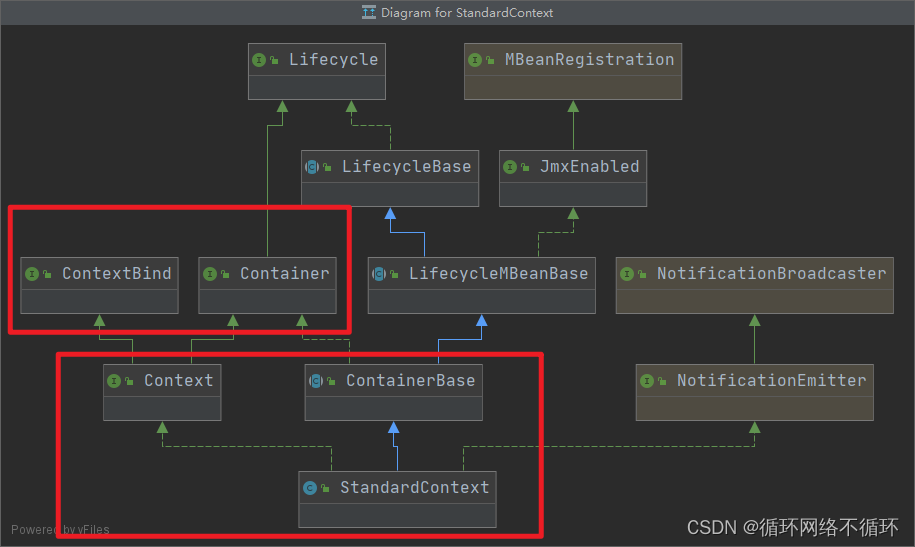
二、阅读源码
1、ContextBind
(1)方法
这两个方法分别绑定和解绑类加载器,tomcat打破双亲委派机制就在这里。具体的实现,我们到具体的类中查看。
ClassLoader bind(boolean usePrivilegedAction, ClassLoader originalClassLoader);
void unbind(boolean usePrivilegedAction, ClassLoader originalClassLoader);
2、Context
该接口主要定义了一些对servlet的处理,seesiong的处理,以及资源的处理。具体的实现我们需要到具体的类中查看。

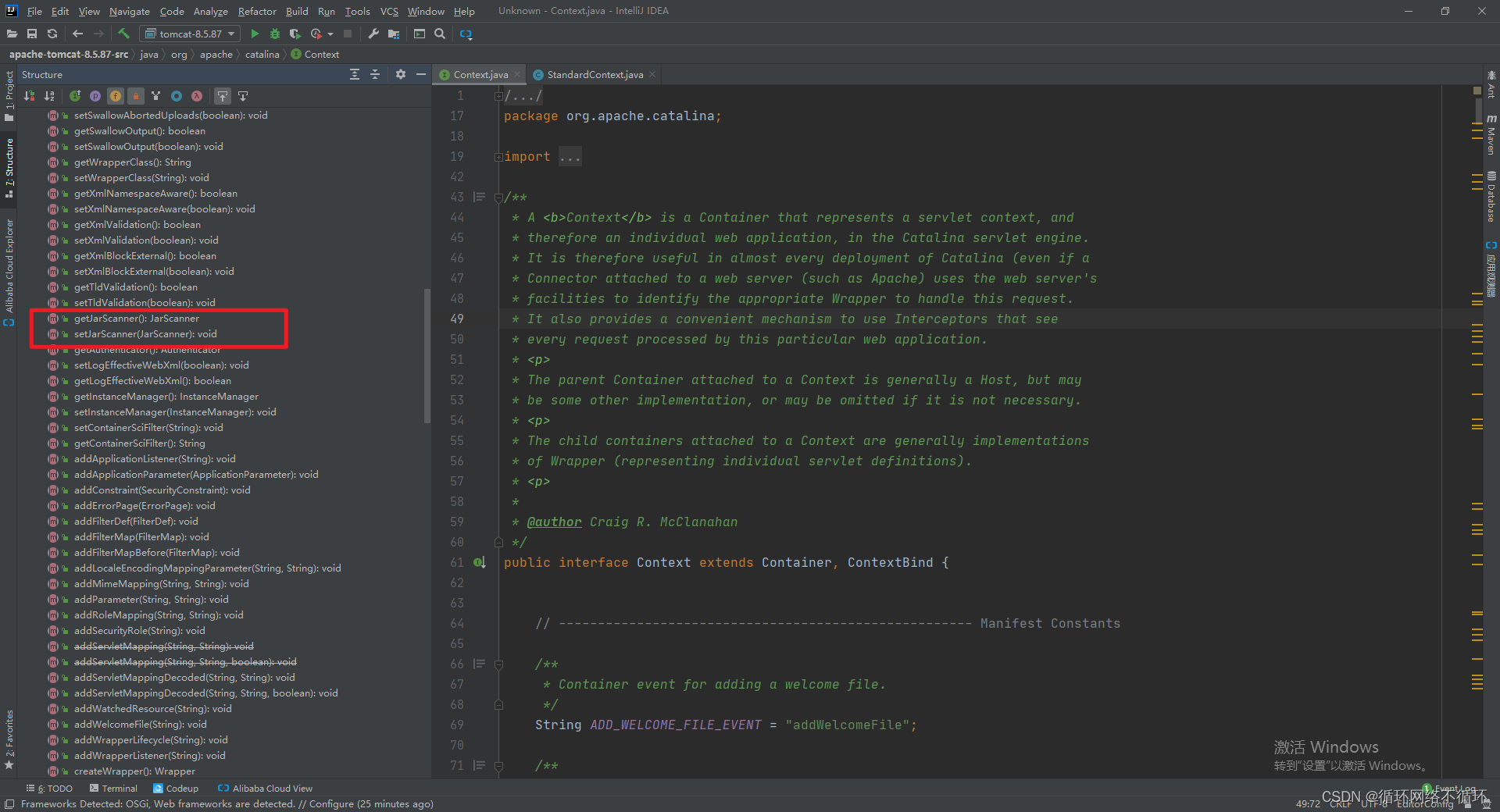
3、StandardContext
(1)方法
postWorkDirectory:
该方法设置了context的工作目录。

setResources:
设置对应的资源集。

resourcesStart:
启动资源。

startInternal:
startInternal的工作流程是这样的,先设置工作目录,然后设置资源,之后将资源全部启动。我们可以知道资源是接下来分析的对象,因为资源类中装有资源,是启动流程的关键。

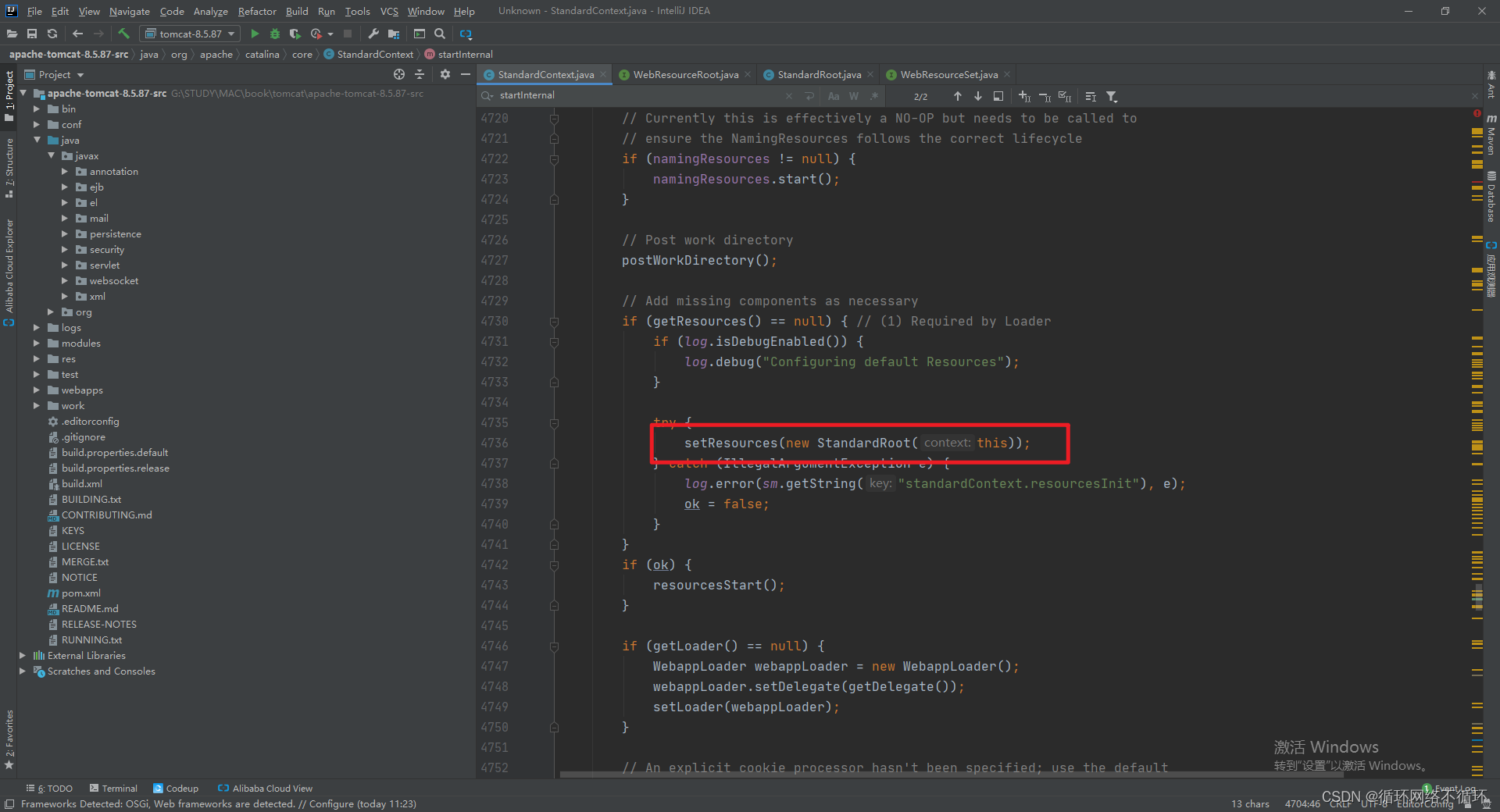
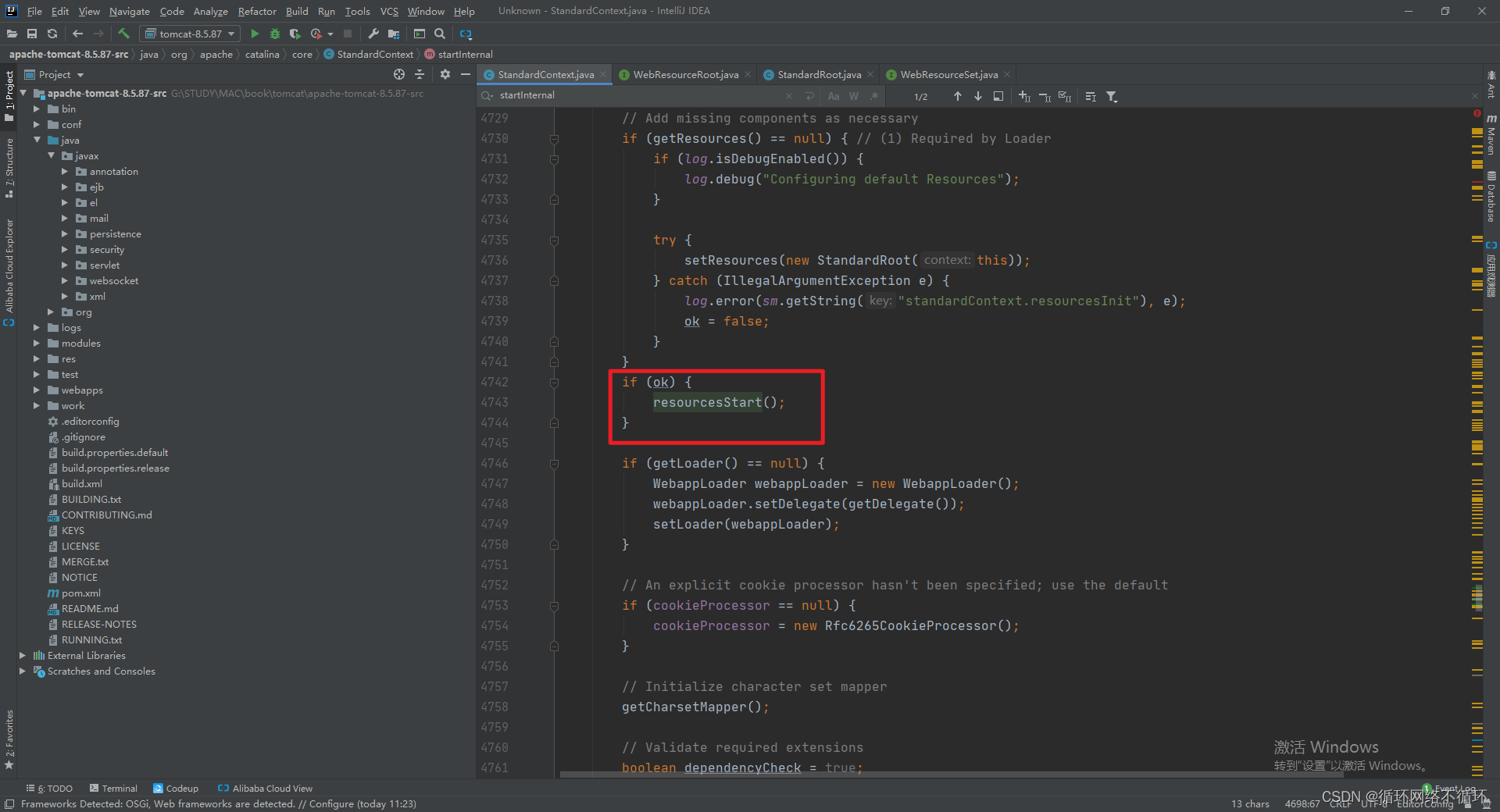
4、WebResourceRoot
根据上面设置资源的方法我们可以知道WebResourceRoot是装资源的资源类,我们由上到下进行学习。
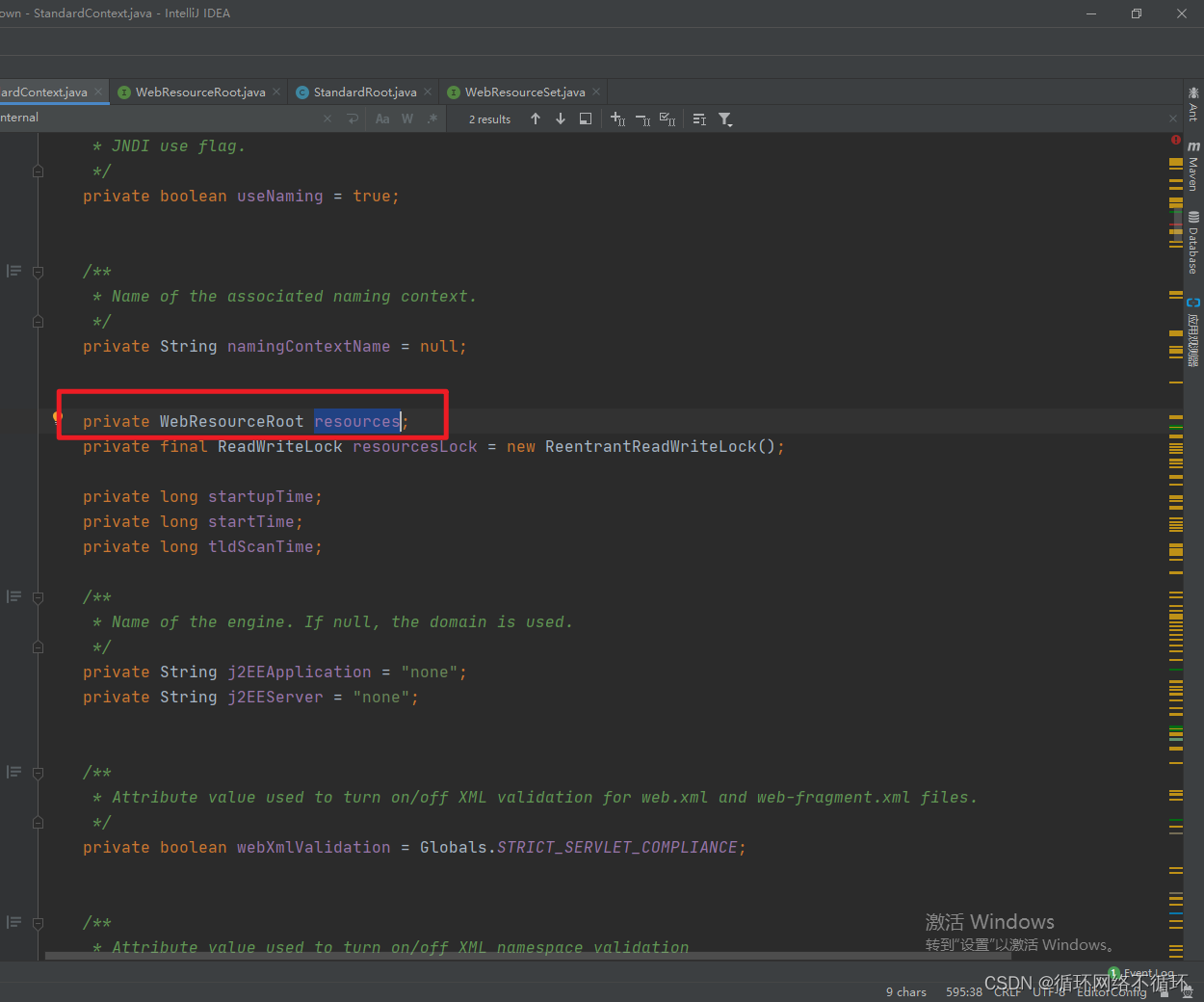
(1)注释
该类包含了一个web应用的全部资源集,资源集有如下分类:Pre(主类启动前的资源集),Main(主类资源集),JARs(jar包资源集),Post(启动后的资源集),对应了下面的枚举类。
/** * Represents the complete set of resources for a web application. The resources * for a web application comprise of multiple ResourceSets and when looking for * a Resource, the ResourceSets are processed in the following order: * <ol> * <li>Pre - Resources defined by the <PreResource> element in the web * application's context.xml. Resources will be searched in the order * they were specified.</li> * <li>Main - The main resources for the web application - i.e. the WAR or the * directory containing the expanded WAR</li> * <li>JARs - Resource JARs as defined by the Servlet specification. JARs will * be searched in the order they were added to the ResourceRoot.</li> * <li>Post - Resources defined by the <PostResource> element in the web * application's context.xml. Resources will be searched in the order * they were specified.</li> * </ol> */
enum ResourceSetType {
PRE,
RESOURCE_JAR,
POST,
CLASSES_JAR
}(2)方法
WebResourceRoot的主要方法还是拿资源,具体的方法实现,我们需要看具体的实现类。

6、StandardRoot
(1)属性
private final List<WebResourceSet> preResources = new ArrayList<>();
private WebResourceSet main;
private final List<WebResourceSet> classResources = new ArrayList<>();
private final List<WebResourceSet> jarResources = new ArrayList<>();
private final List<WebResourceSet> postResources = new ArrayList<>();(2)方法
createWebResourceSet:
该方法会根据对应的目录生成对应的资源集对象,并加入对应的资源集列表中。


createMainResourceSet:
该方法根据资源是war包或者文件夹,加载主类资源。
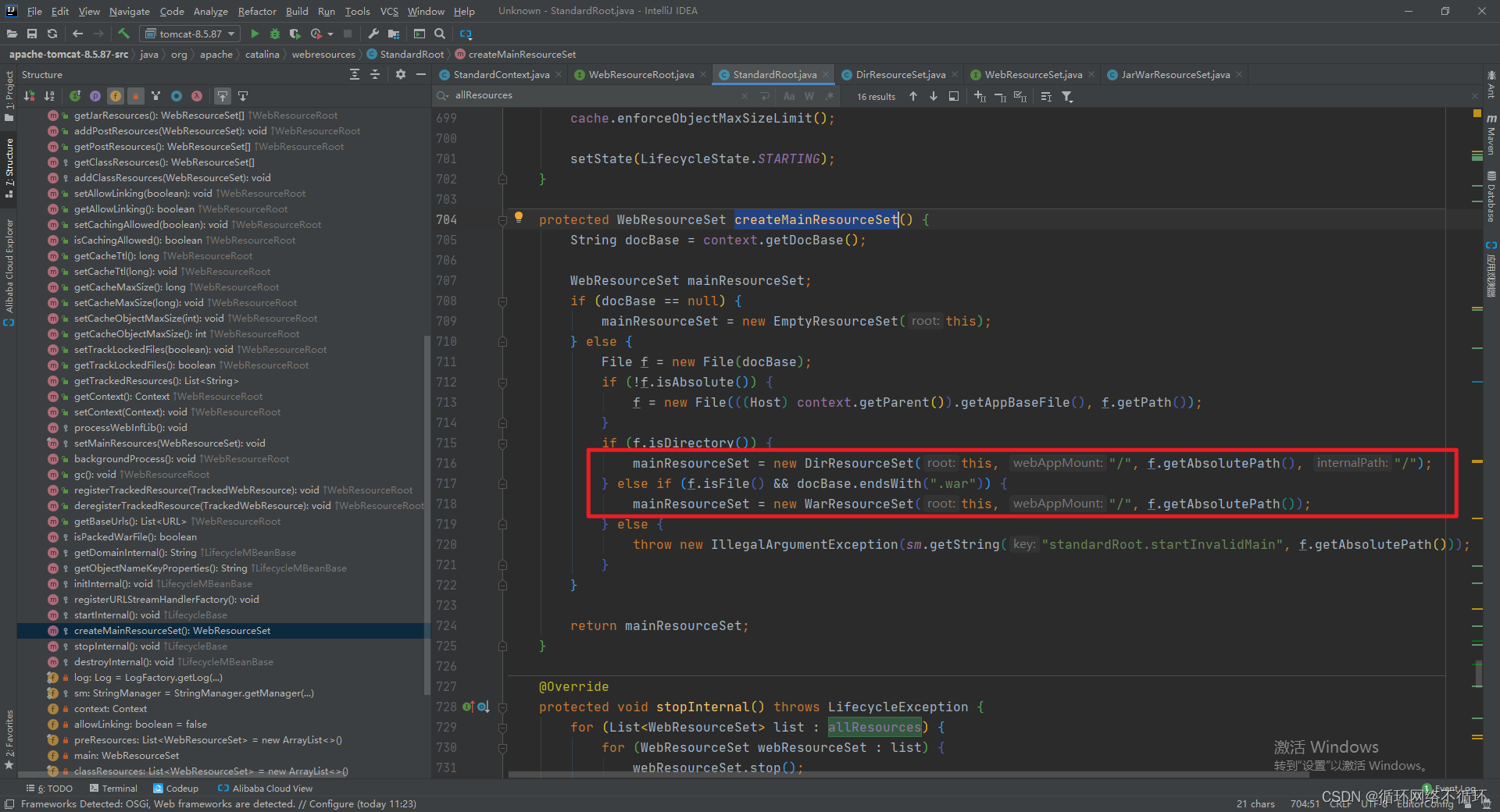
processWebInfLib:
processWebInfLib方法就是根据传参,创建对应的资源集。
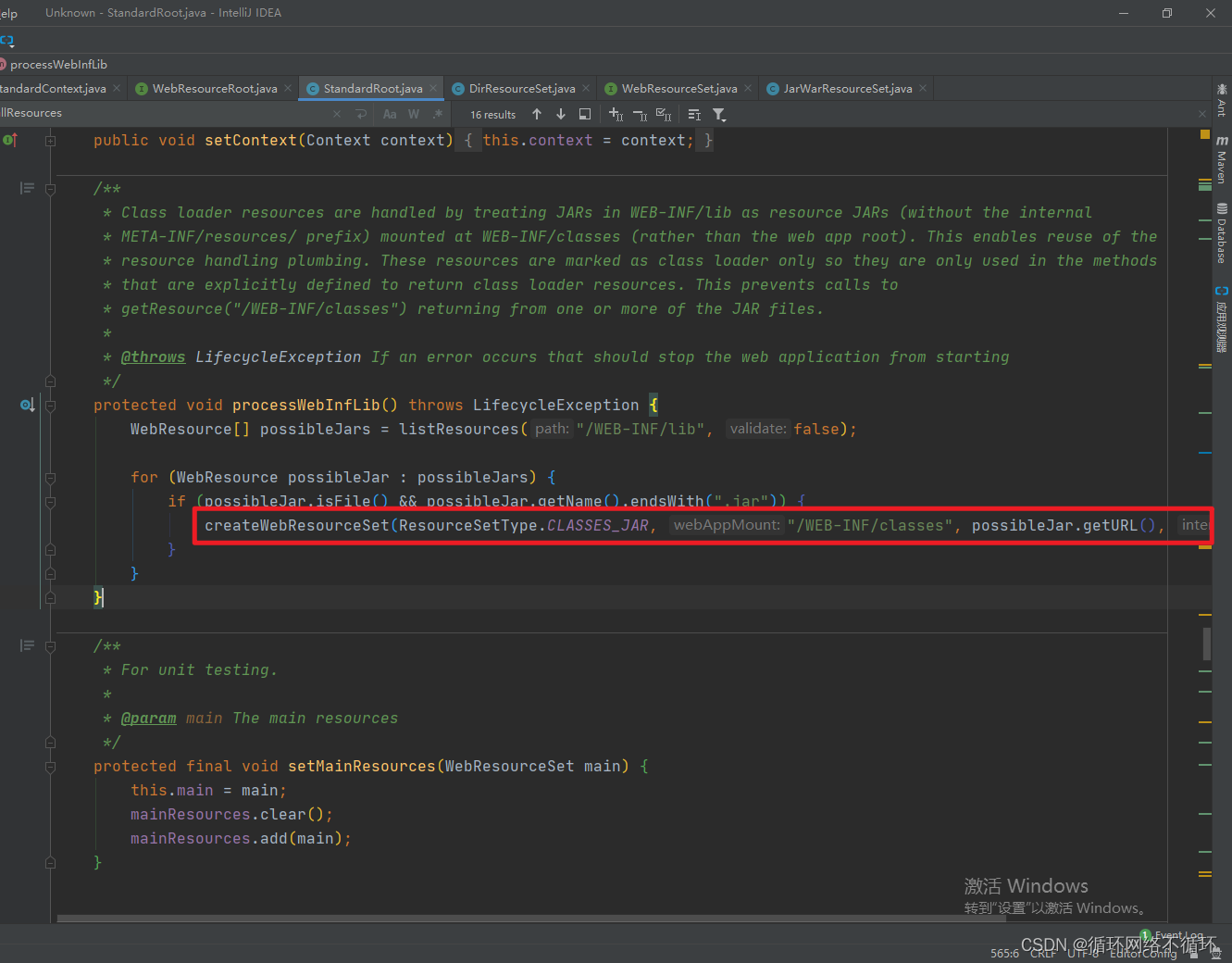
startInternal:
startInternal先创建主资源类,之后在创建其它的资源类。

7、WebResourceSet
WebResourceSet我们主要知道它的结构就可以了。WebResourceSet下面有jar资源集,war资源集,file资源集,不同资源集有不同的资源结构。
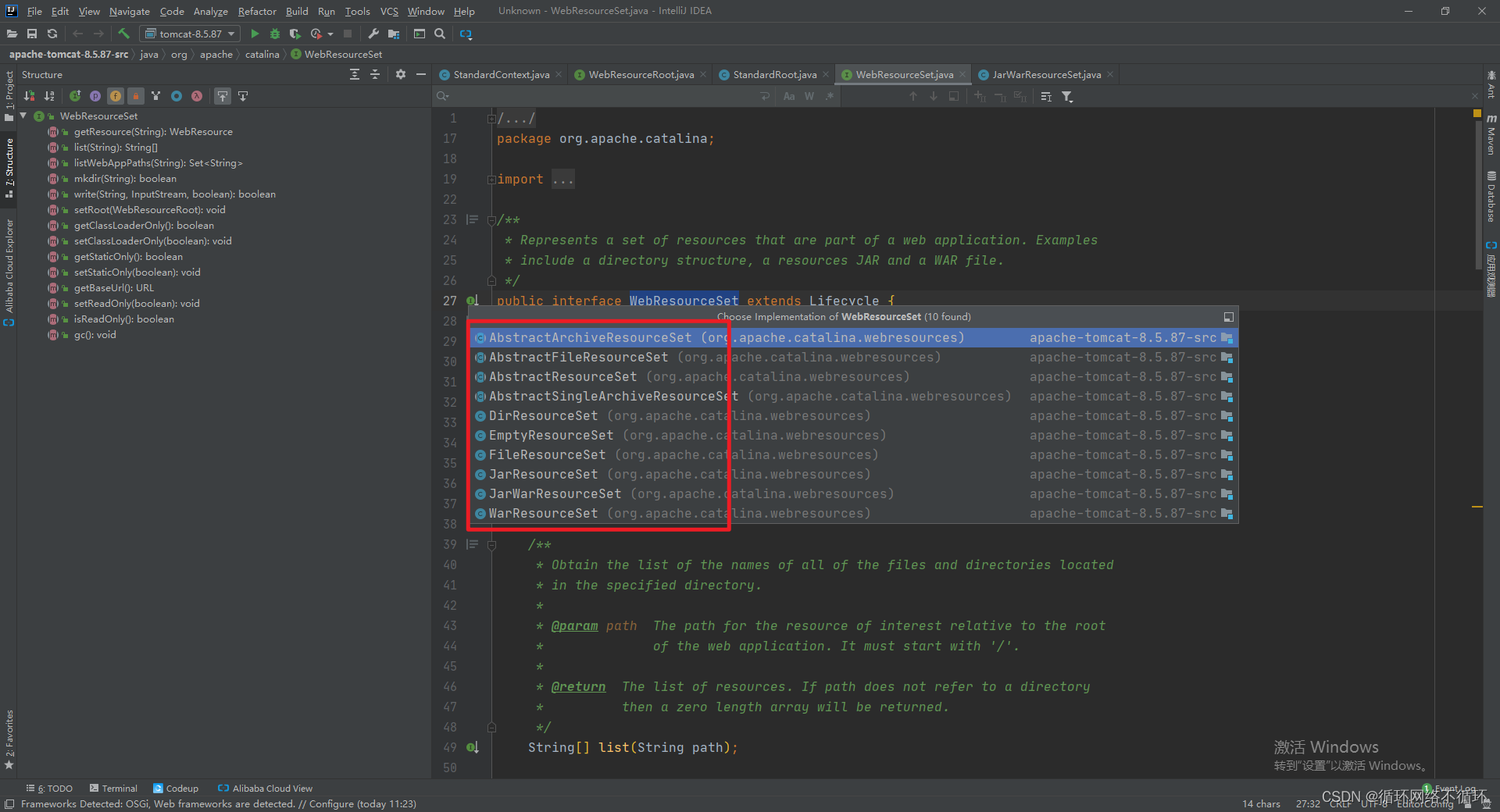
























 294
294











 被折叠的 条评论
为什么被折叠?
被折叠的 条评论
为什么被折叠?










